Last updated: July 5, 2023
Article
The Klamath Kaleidoscope: Spring-Summer 2023
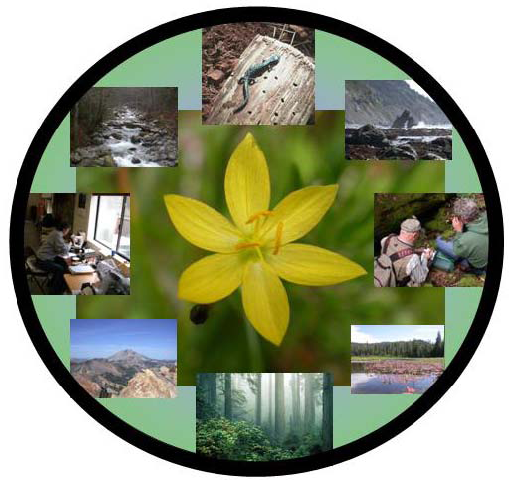
In this issue of the Klamath Kaleidoscope, we welcome the network’s new vegetation program lead, share updates to our invasive species early detection protocol, and summarize good news from the second year of water chemistry sampling for heavy metals and insecticides in network parks. We also welcome the contributions of temporary staff joining our team this year, and highlight where science writing intern, Natalie DiNenno, has landed in her career. Scroll down for the summer fieldwork calendar and recent publications and presentations.

Welcome to Klamath Network’s New Vegetation Program Lead, Lauren Neel
Lauren Neel is the network’s new ecologist and vegetation monitoring program lead. She is passionate about studying the ecological consequences of climate change and habitat management at all organizational levels, from organisms to ecosystems. Her research integrates field work and computational methods to investigate ecological questions.
Lauren earned her MS in Biology from Georgia Southern University in 2016, where she studied the impacts of contrasting management regimes on shaping habitat composition and subsequent physiological performance in an endemic lizard in Ocala National Forest. After that, she went on to earn her PhD in Biology from Arizona State University in 2023. Her dissertation focused on linking habitat composition and structure with thermoregulatory behavior and physiological performance in lizards.
Lauren has diverse field work experience, including leading projects in Florida, The Bahamas, Panama, and Arizona. Despite being relatively new to southern Oregon, Lauren is thrilled to be here now and is particularly excited about studying how wildfires are shaping vegetation communities in the region. In her free time, she enjoys painting, hiking, playing piano, and relaxing with her partner, Jake, and her sweet long-haired cat, Ava.

NPS/Dave Hays
Changes to Invasive Species Protocol
The Invasive Species Early Detection Protocol (ISED) is getting an update this year to make it more useful to parks. The goal of this protocol is to detect invasive species on a timely basis to allow effective management responses. The past protocol consisted of two parts: random sampling of roads and trails and sampling of random plots. The random nature of this sampling was problematic because surveys were not necessarily reaching the most critical areas in the park. Instead of random sampling, this year the ISED teams will survey roads and trails that park staff have identified as important. In addition to surveying roads and trails, the teams will conduct extra area searches in places that the park staff choose. These extra areas can be anywhere in the park along linear features, like park boundaries, streams, or lake edges. Each of the six Klamath Network parks will have up to eight days of surveys along roads and trails and up to three days of extra area surveys. By surveying areas that the parks have identified as critical, ISED can help parks to identify and eliminate invasive species more effectively.
—Jeri Stoller, Scientists in Parks Intern
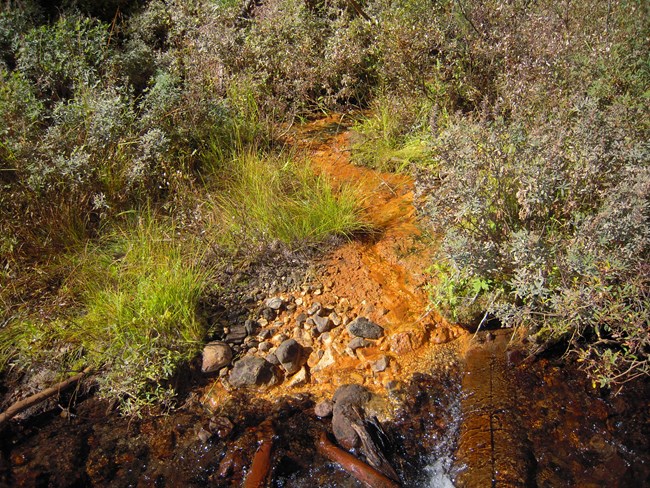
NPS/Eric Dinger
Water Chemistry Update
In 2021 and 2022, the Klamath Network had an opportunity to conduct an inventory of insecticides and heavy metals in park streams and gain a greater understanding of stream health. Klamath Network field crews collected water samples in the five park units that contain surface water and then sent the samples for laboratory analysis of carbamate insecticides and heavy metals, including arsenic, barium, copper, iron, and lead. (See What’s in the Water from the Fall/Winter 2021 Kaleidoscope newsletter to learn why we targeted carbamate insecticides and heavy metals.) Laboratory analyses were completed this past year (2022), and results for all five parks are now ready.
Across all five parks, the water samples contained no detectable levels of carbamate insecticides, a positive sign. However, lack of knowledge about chemical volatility and precipitation patterns makes it difficult to rule out the possibility that these chemicals have been used in park watersheds.
In more good news, most detections of heavy metals were below safe levels for drinking water. While a few sites in parks had detectable levels of barium, iron, manganese, and zinc, the only metal with measured values above drinking water thresholds was iron. Most metals detected in our monitoring, including iron, are likely from natural geological sources. One exception is the presence of elevated levels of multiple metals from sites in Whiskeytown National Recreation Area; while partly from geological sources, they are probably also due to the lingering effects of acid mine drainages. Overall, the data indicate that Klamath Network streams are clear of carbamates and largely have only ambient levels of heavy metals.
—Jeri Stoller, Scientists in Parks Intern
Interns and Interim Staff Join the Klamath Network Team
We welcome the support of three new staff who are temporarily on board for most or all of the fiscal year. Their skills will lend support for the vegetation monitoring program, data management, and science communication.
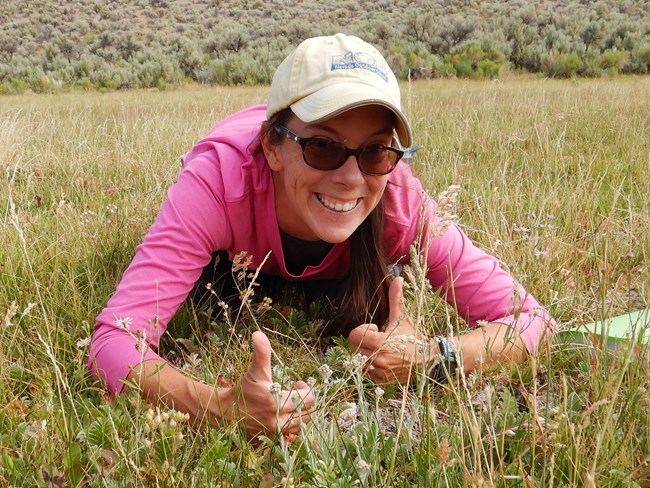
Jacqueline (Jackie) Lucero serves as our interim vegetation monitoring program lead for the summer 2023 field season. She’ll be on board through the summer, overlapping with the start of the network’s permanent vegetation program lead. Jackie’s background includes surveying sensitive plants in Nevada and leading conservation service crews on a variety of projects in states across the country for the Student Conservation Association. She holds an MS in Environmental Education from Lesley University in Massachusetts, and a BS in botany from Auburn University. She’s originally from Montana and spent two years as a Peace Corps volunteer in Guatemala.

Jeri Stoller is a year-long science communication intern through the Scientists in Parks program. She’s based with the Klamath Network but serves the entire Pacific West Region (Regions 8, 9, 10, 12). She’ll be doing a little of everything, from technical editing, to writing web articles, to creating story maps, and more. She recently graduated from Colgate University in New York, where she double majored in English and Environmental Geology.
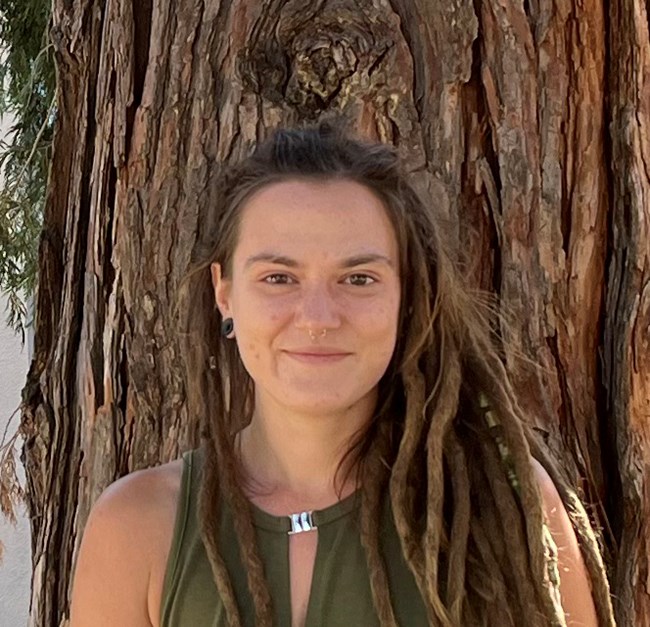
Dani Niziolek comes to the network as a year-long Great Basin Institute intern focused on data management and analysis. She gained valuable analytical skills through her BA degree programs (Urban Planning and Sustainability; Environmental Studies; Ohio University) and her recently completed MS in Geography, with a specialization in Fire Ecology, from Pennsylvania State University. Lassen Volcanic National Park was the stomping ground for her graduate study of conifer regeneration in postfire landscapes, so she’s familiar with the region. She’ll be working closely with Eric Dinger, our quantitative ecologist, and Allison Snyder, our data manager, to help distinguish natural vs. observer caused sources of variation in our long-term monitoring data—an important component of any trend analysis.

NPS
A Successful Return to In-Person Klamath Conversations
After a several year pause, Klamath Network park staff and partners gathered in person for a 3-day Klamath Conversations event in December 2022, in Ashland, Oregon. Since Klamath Conversations first started in 2014, the goal of these meetings has been to promote interdisciplinary understanding, sharing, and learning among network parks, programs, and divisions. The event this year had 70 attendees. Division staff meetings and the network’s Board of Directors meeting occurred at the start and end of the 3-day event to make the most of the in-person gathering.
Central to the event were two half-day sessions of short, 15-minute presentations about park projects. Twenty-one presentations and two posters covered a wide range of natural, cultural, and interpretation/education resource topics, such as
-
The Bear Foot Resort: Archaeological Discoveries of an Illicit Nature
-
Some Like it Hot: Bat Acoustic Monitoring Reveals Varied Response to Post-Wildfire Landscape
-
Wintu of Whiskeytown: Communicating Indigenous Stories to Park Visitors
Not surprisingly, almost a third of the presentations concerned wildfires, which have burned extensively through network parks in the past few years and presented myriad challenges. A new web article about the gathering provides more detail: Conversations about Conservation: Eight Years of Scientific Sharing in Northern California and Southern Oregon
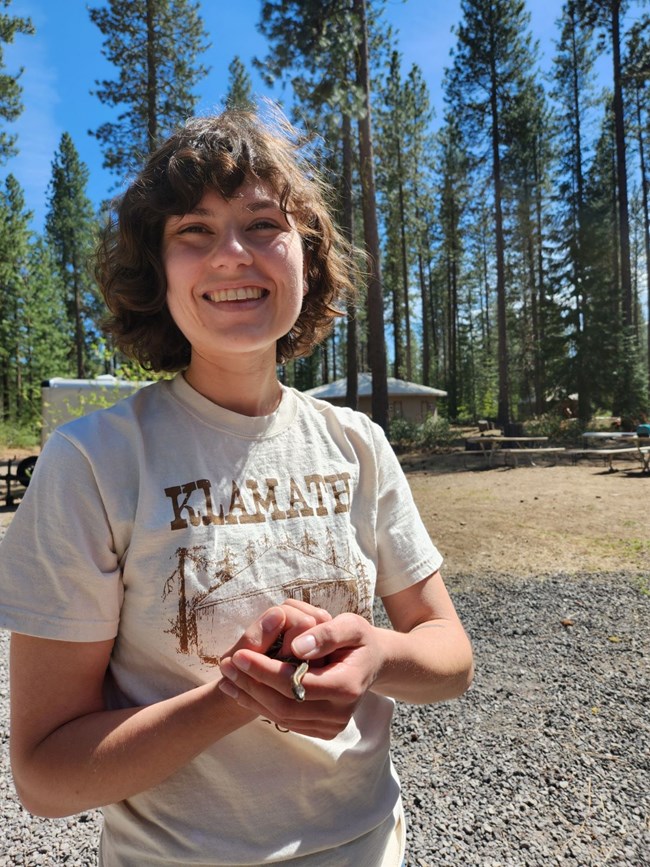
Where Are They Now?
The Klamath Network works with a variety of interns to support our program and to offer educational experiences. Interns may find themselves sampling water quality, monitoring whitebark pine, identifying native plants, mist-netting bats, or writing about our science. Here we highlight where our interns have landed professionally or educationally.
Natalie DiNenno
Klamath Network position: Science Writing Intern, 2022
Current job: Executive Director of the Klamath Outdoor Science School, Klamath Falls, Oregon
Natalie DiNenno wrote about the clever adaptations of organisms living in the rocky intertidal zone for her science writing internship with the Klamath Network. On the Edge: The Curious Lives of Intertidal Organisms and How We Monitor Them delves into specialized adaptations of intertidal organisms, such as byssal threads, tube feet, and holdfasts, as well as the methods used by NPS scientists and partners to monitor this unique ecosystem.
After graduating with an MS in Environmental Education from Southern Oregon University last year, Natalie landed a job as the executive director of the Klamath Outdoor School. The school offers day programs, a resident outdoor school, and summer camps, all focused on inspiring children to connect with nature while learning about ecological concepts. Natalie describes what she loves about her new job and how her internship experience contributed to the skills it requires:
“I love working with students, seeing them develop love for the environment and become excited about science. I also love getting to meet other educators and nonprofit leaders as part of our outreach and partnership work.
As an intern with the Klamath Network, I practiced communicating scientific concepts with a general audience, and that continues to be a part of my daily work. Although we primarily work with kids, communicating our mission and its importance to parents and teachers is a crucial aspect of our work.”
2023 Fieldwork Calendar

NPS
Recent Publications and Presentations
Conference Presentations
Chung-MacCoubrey, Alice, L., Anastasia V. Pittis, Eric C. Dinger, Diana E. Northup, Rickard Toomey, and Kathleen H. Lavoie. Non-target effects of UV-C on bacterial communities at Mammoth Cave National Park. 2023 National White Nose Syndrome Meeting, June 5–8, 2023. Palm Springs, California.
Daw, S. Engaging the Next Generation of Scientists. Presented at National Park Service Klamath Conversations, December 7, 2022. Ashland, Oregon.
Smith, S. Whitebark Pine Growth Rates and Relationship to Blister Rust and Interspecific Competition. Presented at the National Park Service Klamath Conversations, December 7, 2022. Ashland, Oregon.
Park Presentations
Face to Face Briefings allow Klamath Network staff to present detailed results from annual monitoring of vital signs with park staff. The briefings are conducted either in person or via a Teams call, and provide time for questions and dialogue. We invite interpreters and other park staff outside of resource management to join the higher level overview at the start of each briefing and to read the 2-page public-friendly brief that accompanies each briefing.
- On March 14, 2023, Dr. Eric Dinger, aquatic ecologist with the Klamath Network, presented detailed results of monitoring streams in 2021 to Whiskeytown NRA staff. View the 2-page brief associated with the presentation, which also links to more detailed information about monitoring results and the program.
Science Communication
Featured Creature natural history articles (quarterly schedule):
Checking Lava Beds’ Vital Signs – public-friendly web article and 2-page printable brief describing natural resource vital signs monitored at Lava Beds National Monument.

Newsletter prepared by Sonya Daw and Jeri Stoller
NPS Klamath Inventory & Monitoring Network
Southern Oregon University
1250 Siskiyou Blvd
Ashland, OR 97520
To view past issues of this newsletter, please visit the Klamath Kaleidoscope Newsletter page on our website.
